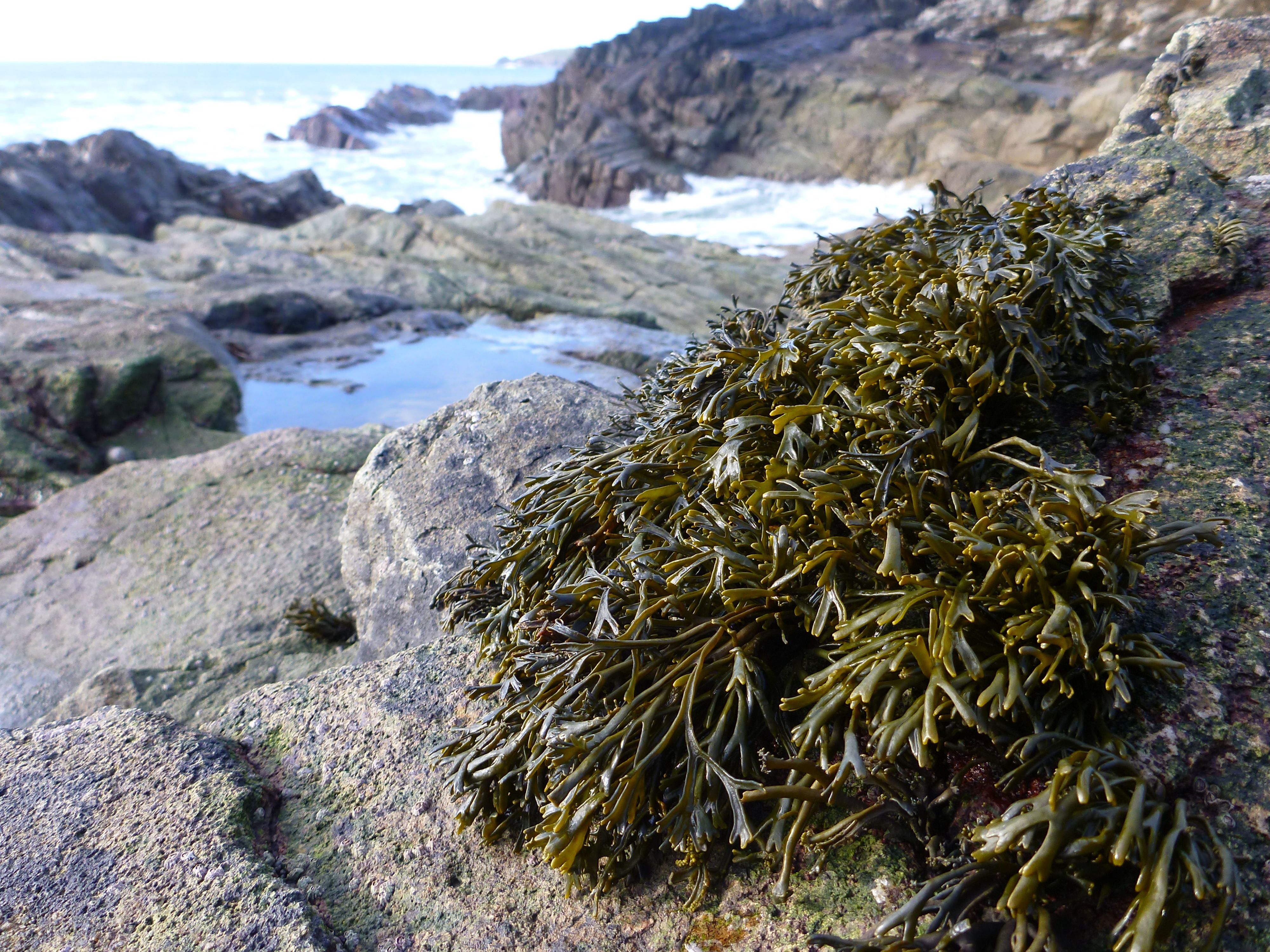Winter is a harsh and testing time for those dwelling at the margins of UK seas or inhabiting their surface waters. Low pressures brood in the Atlantic creating storms and whipping the ocean surface into waves that heave landward. At this time many marine creatures leave for warmer climes or migrate to deeper waters, whilst seaweeds die back or shed their fronds. For others that stay put year round, it’s business-as-usual. Here I draw attention to five of these hardy, persistent forms of marine life. Common along most rocky coasts in the UK that you may visit by kayak, each one is easily overlooked to the untrained eye, yet their fascinating traits and life stories make them anything but dull. Look out for this top five on your next trip with renewed insight, there is so much more than meets the eye!
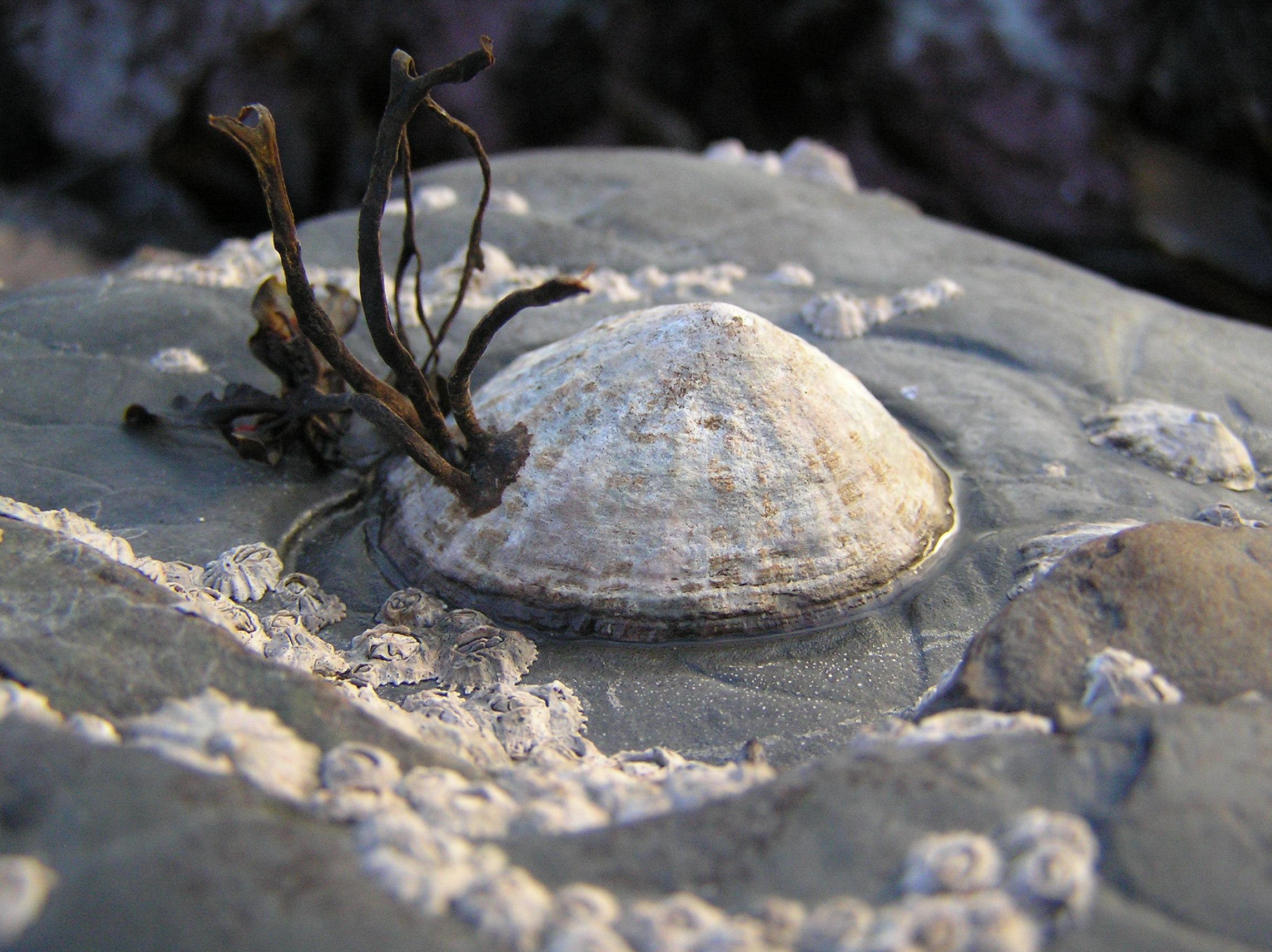
1/ Limpet with a record breaking tongue!
Though often seen stationary and fixed to one spot, they actually move freely on their muscular foot much like a garden snail. As they glide along they lick the rock with a rough, tongue called a radula, removing a fine layer of algae and seaweed sporelings as they go.
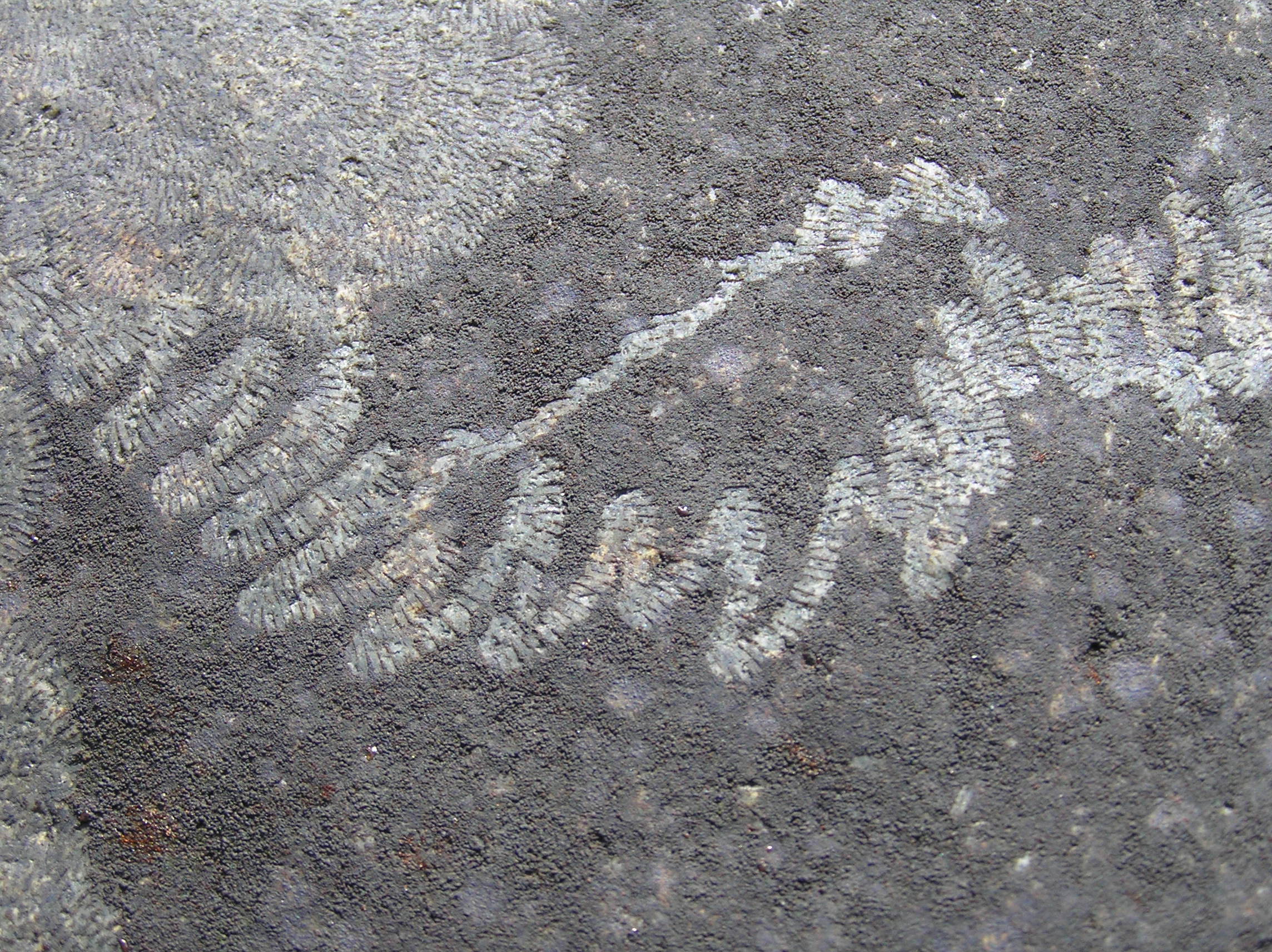
Recent research has found that the small teeth studding the radula are made of a substance five times stronger than spider silk, in fact it is the strongest biological substance on earth. The secret lies in its nanoscale composite structure, made up of a mineral called goethite embedded in a protein matrix. Such is its strength that it rivals even the highest quality man-made carbon fibres. On a calm, quiet day at low tide, it’s possible to tune in to their rhythmic rasping of the rock.
Adding to their super-hero status are their flawless navigation skills that bring them back to the same home-scar on the rock after every grazing jaunt and of course their ability to thrive in one of the most extreme environments on the planet.
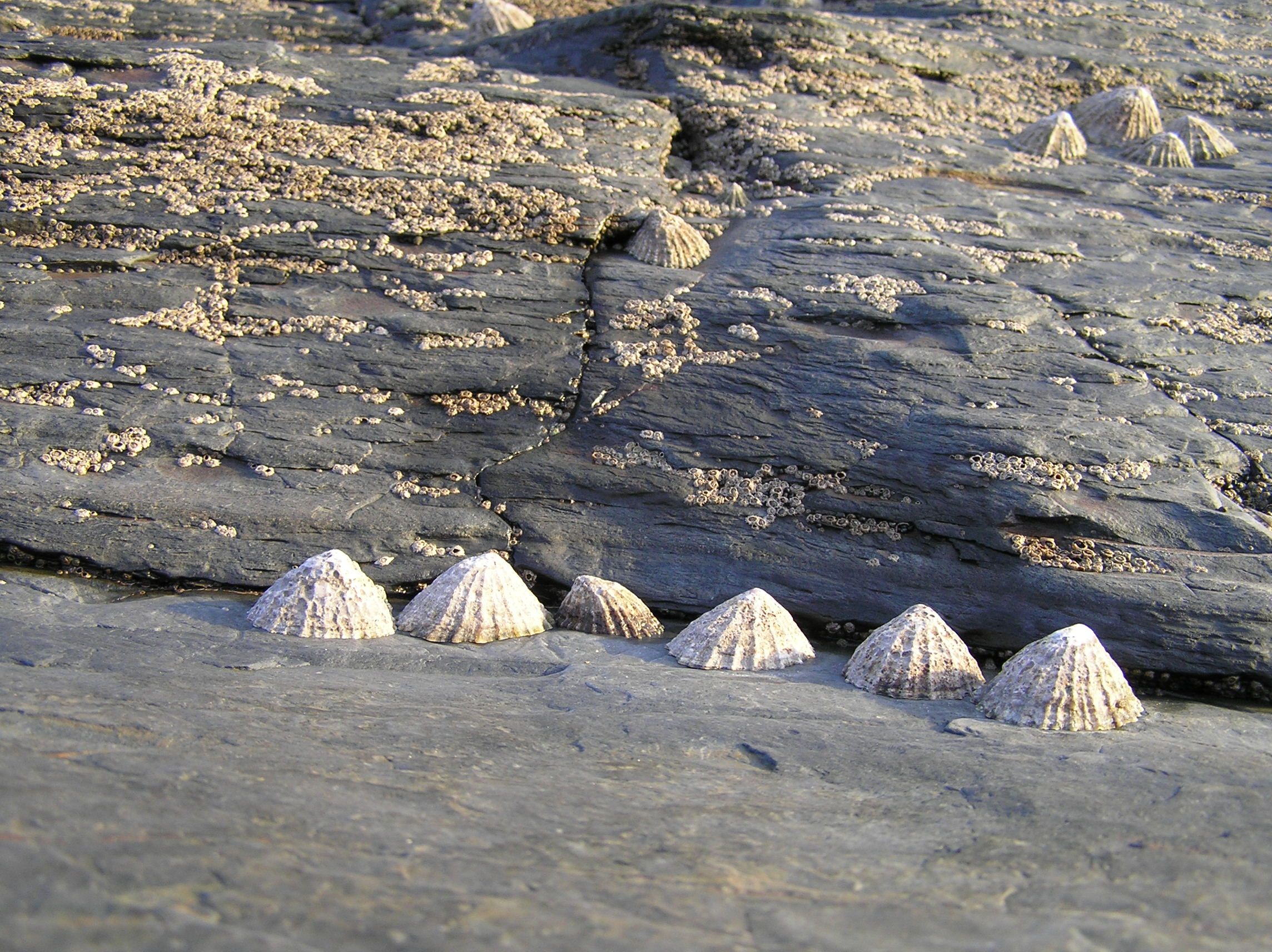
2/ Black tar lichen at the high water mark
Glance around the rocky coasts of the temperate northern hemisphere and you will see a black line like smudged charcoal fading off in to the distance. This is not the rock itself but a veneer of black tar lichen which is adapted to living at the high tide mark. Here it is routinely splashed with salt-laden sea spray and may extend some way up the cliff face forming a band of black. On west-facing cliffs of offshore islands the black band extends twenty metres or more up the cliffs, whilst in the calm shelter of natural harbours it spans less than a metre in height. As sea kayakers we can look at the black tar lichen band on a particular shore and get an idea of how much wave exposure it experiences. This lichen looks like dried tar on the rocks, hence its name.
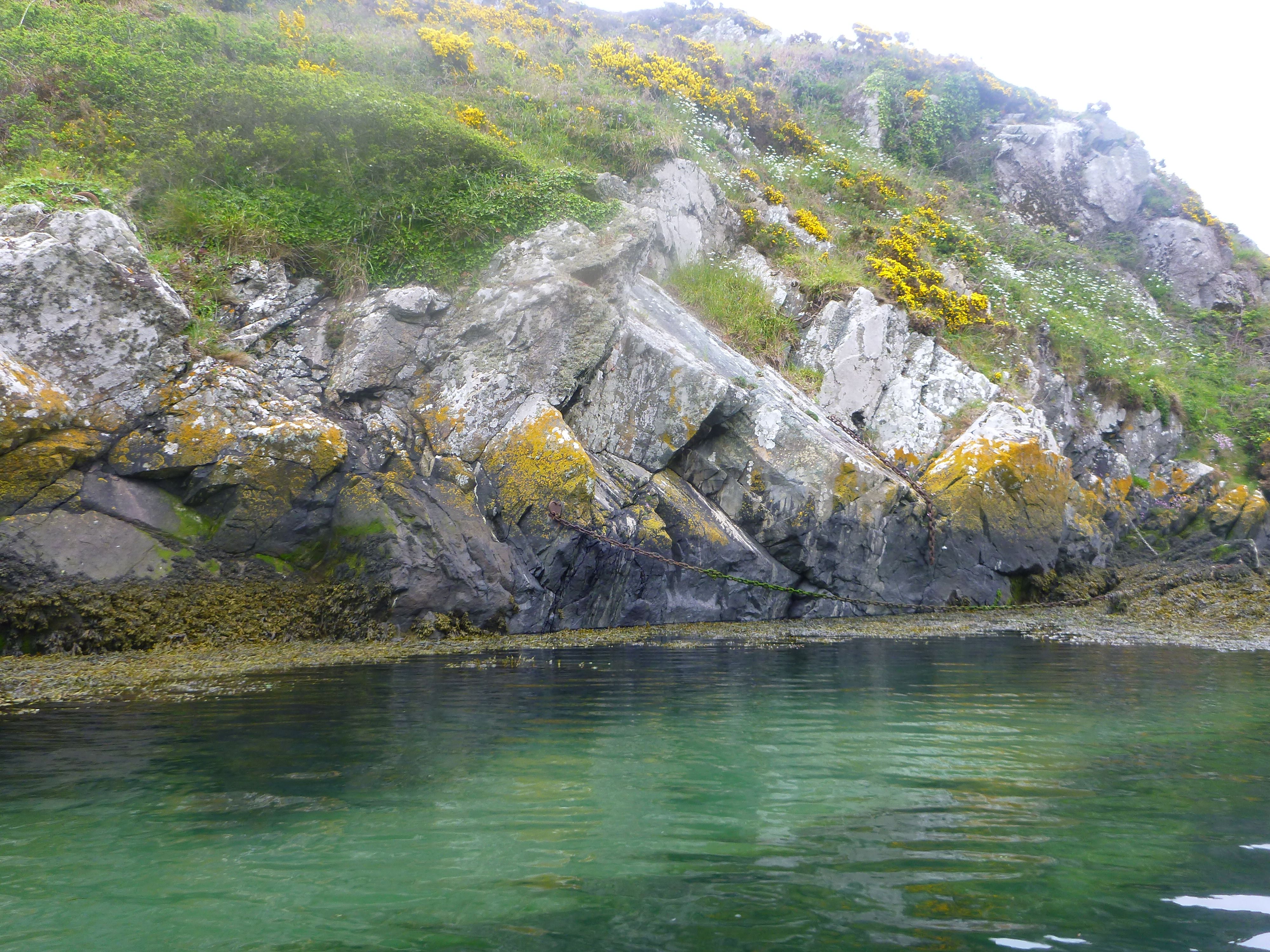
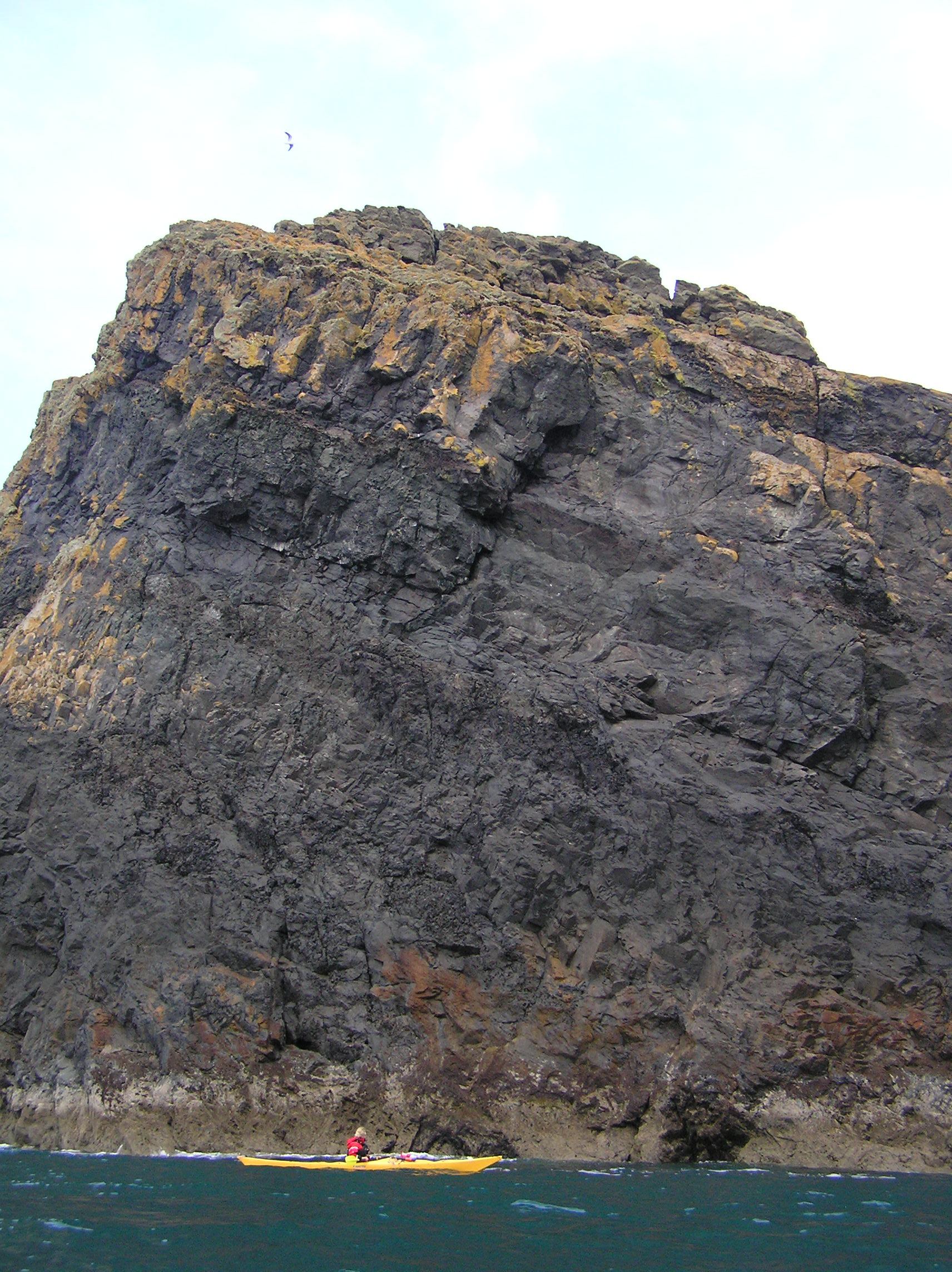
Lichens are a partnership of fungi and algae working symbiotically for mutual benefit. Fungi are incapable of making their own food and usually provide for themselves as parasites or decomposers. In the lichen partnership, the fungus is the dominant partner, cultivating its algal companions to manufacture food by photosynthesis. In this process, algae convert water and carbon dioxide into fuel for the fungus and in return, the fungus acts as a protective covering for the algae. Together they can exploit habitats that they would not survive alone. I like to think of them as fungi with solar panels installed for energy which has allowed them to grow in places too harsh or limited for most other forms of life.
3/ Barnacles, the Dirk Diggler of the marine world
These small, volcano-like crusts form a rough, greyish veneer on rock near the high tide mark, enjoying a life in the wave-swept margins. Each begins life as a larva swimming amongst the plankton. After a few weeks the larva then settles on to a suitable rock surface. At this point it glues its heads to the rock and forms a hard shell around the soft body. From this moment on it will spend the rest of its days anchored to the seabed, sieving plankton from the water with its feathery limbs. With this inability to roam comes the challenge of finding a mate for reproduction. Rather ingeniously barnacles have solved the problem by developing a long and highly mobile penis. By proportion, barnacles have the longest penis in the animal kingdom; imagine a six-foot man with a member as long as three Rockpool Isel sea kayaks placed end-to-end (that’s just under fifty feet) and you start to get the picture!
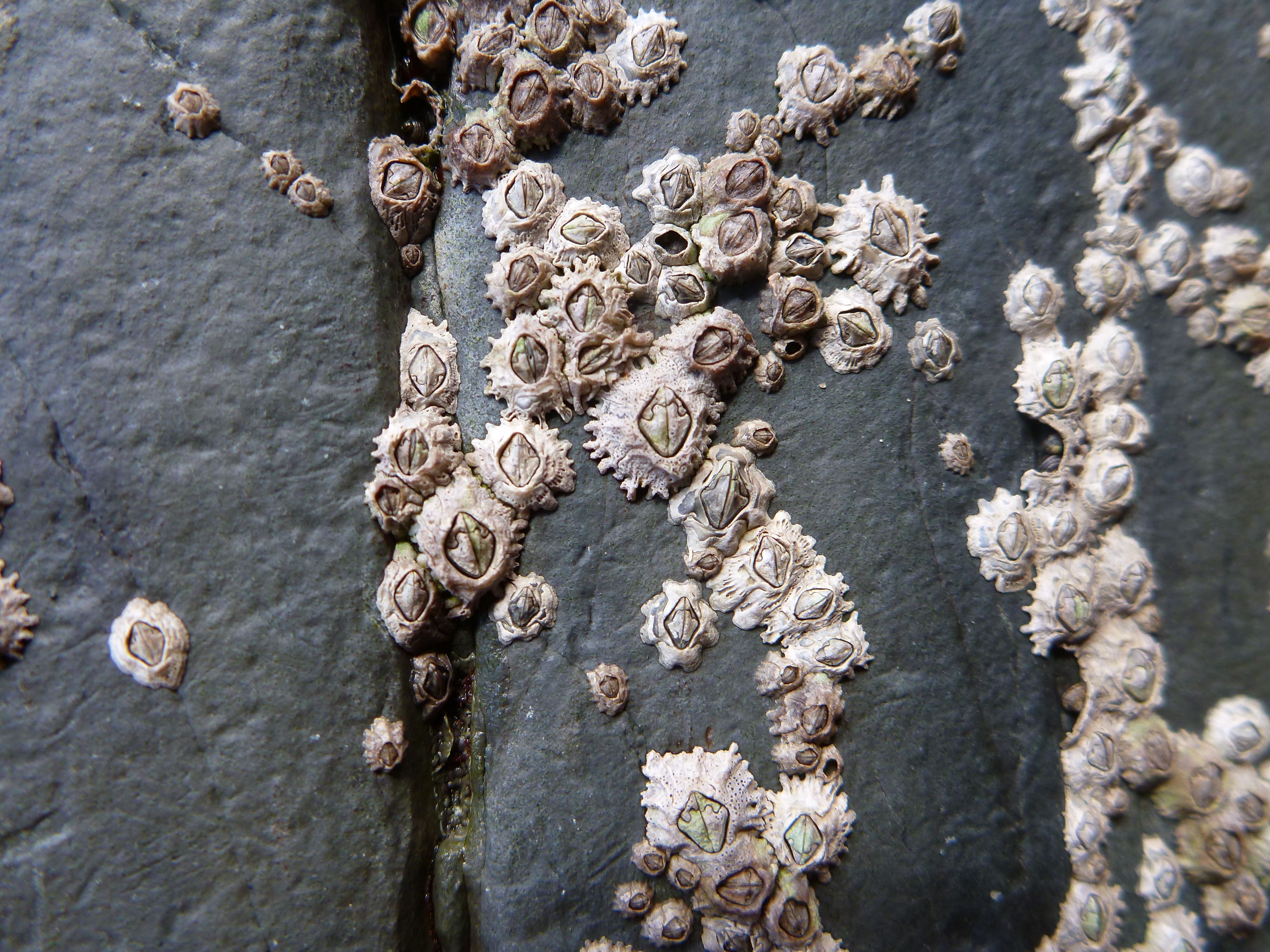
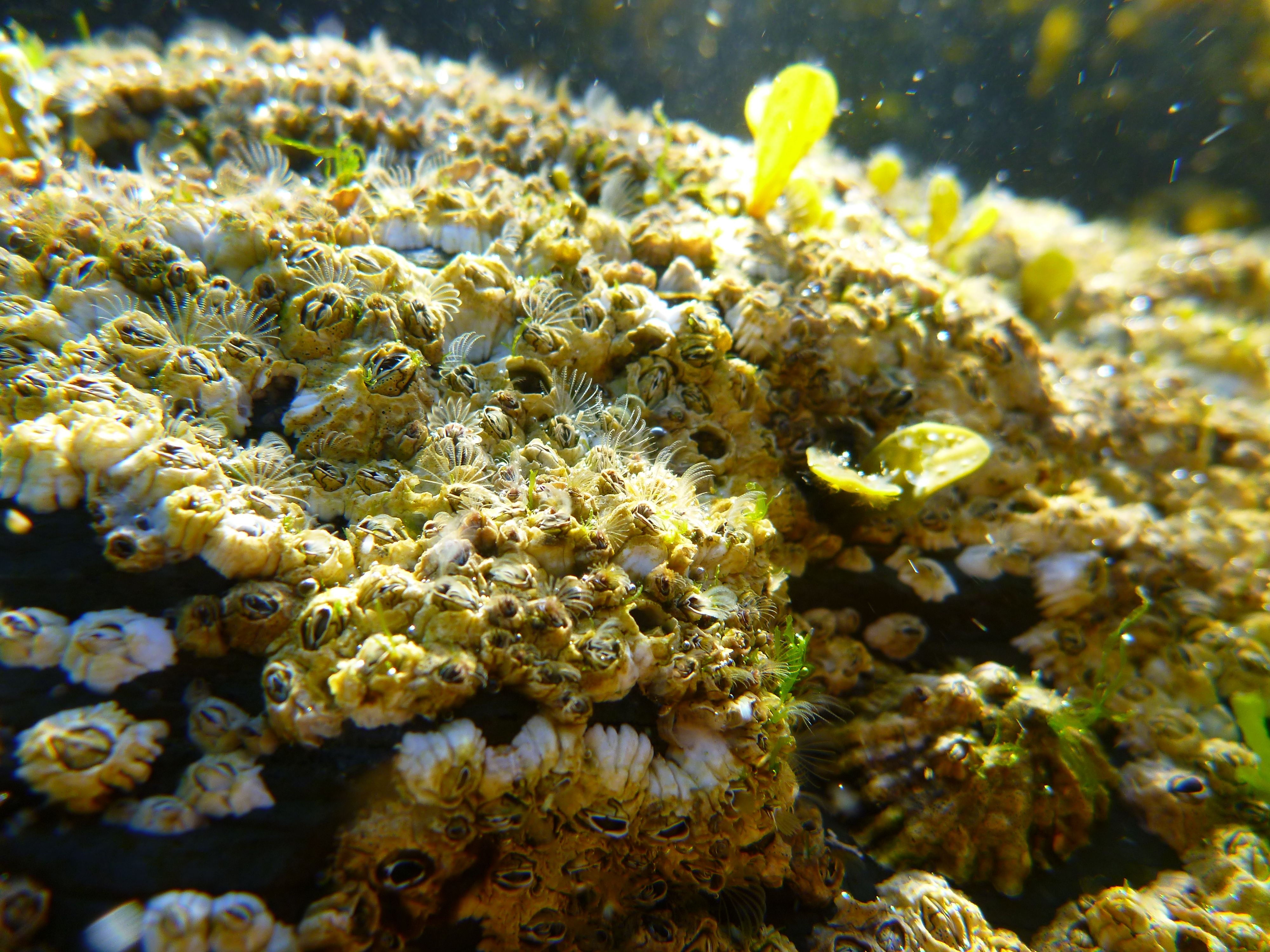
4/ Beadlet anemone, carnivorous blooms
These fleshy blooms of the shore are found both in rockpools and on tidal rock. Out of water they retract the tentacles to prevent dehydration, becoming shiny beads on the rock. In the water they expand in to delicate blooms, tentacles out-stretched to catch prey as it swims by. Embedded in the surface of each tentacle are thousands of stinging cells that discharge on contact, ensnaring and subduing the prey. The catch is then fed into the central mouth for digestion.
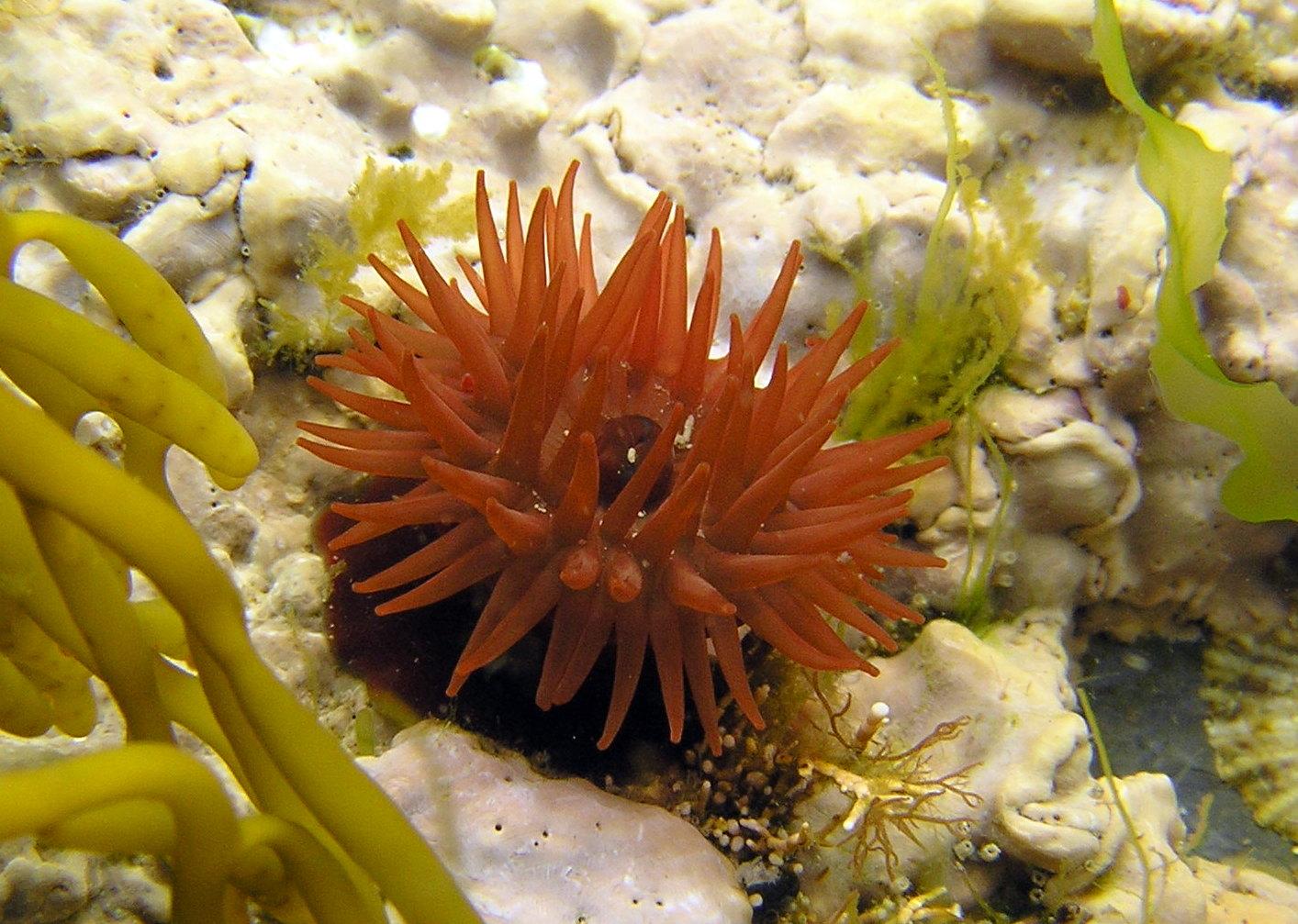
Beadlet anemones are also known for their displays of aggression towards each other for space on the rock. Each is well supplied with a battery of stinging cells in structures called acrorhagi (pronounced akro-raji) that form blue knobbles at the base of the tentacles. In disputes, the aggressor will lean over thrusting its acrorhagi into contact with its victim causing it to make a slow retreat.
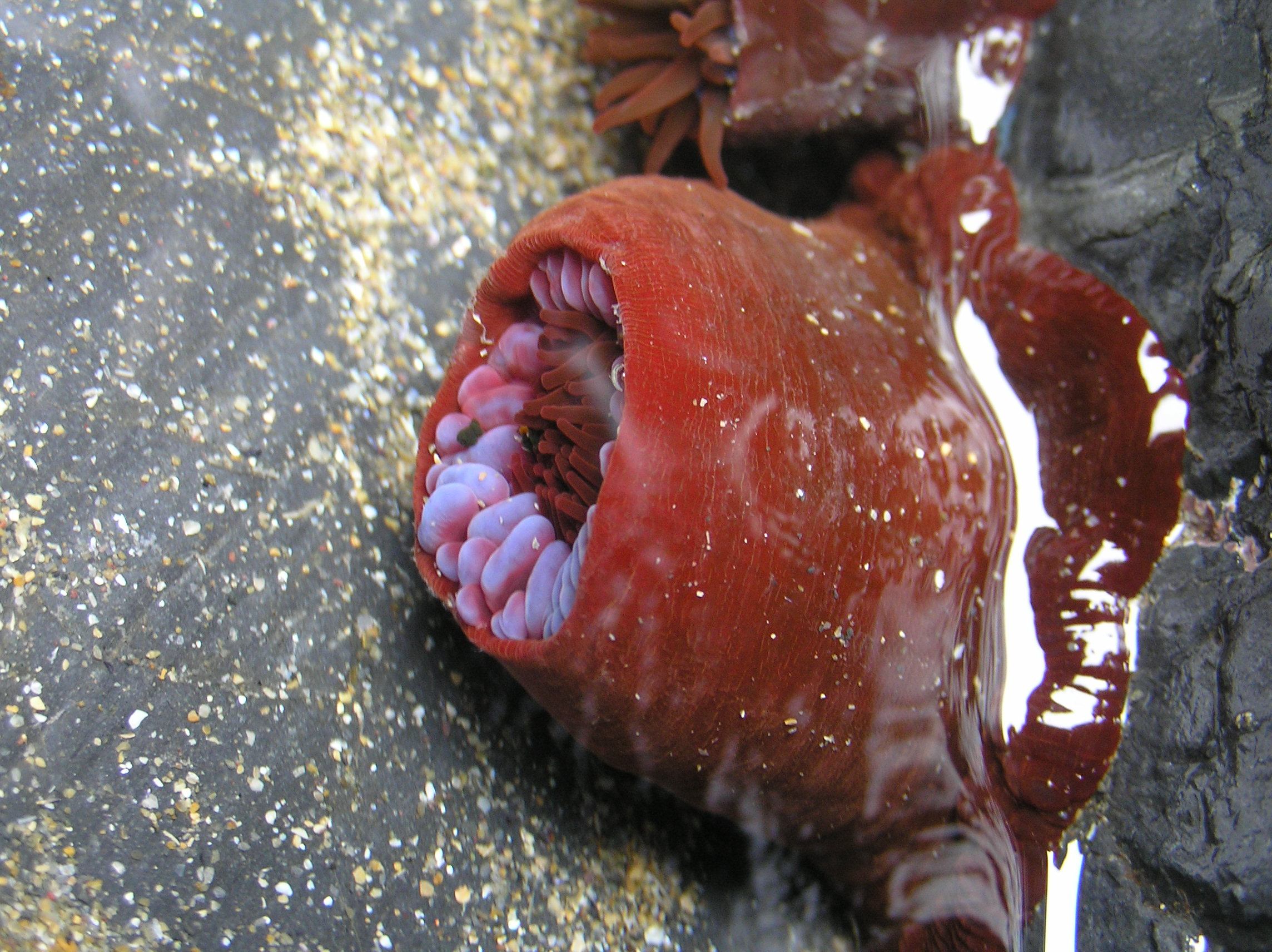
5/ Channel wrack, extreme seaweed
Found high up the shore towards the high water mark this is the smallest, hardiest member of brown seaweeds called wracks. Due to its lofty positioning, it may spend ten hours or more of each tidal cycle exposed to the air. Common with all forms of marine life, time spent in the air is inherently stressful and this particular seaweed shows some impressive adaptations to deal with such lengthy exposure. First is the ability to lose 90% of its moisture content whilst the tide is out, becoming brittle and crispy to the touch. Yet when the tide returns it simply rehydrates with no ill effect. In addition its frond is formed in to a gutter-like structure producing a channel, hence channel wrack. As the frond dries these gutters roll in on themselves, sealing moisture inside the channels.
